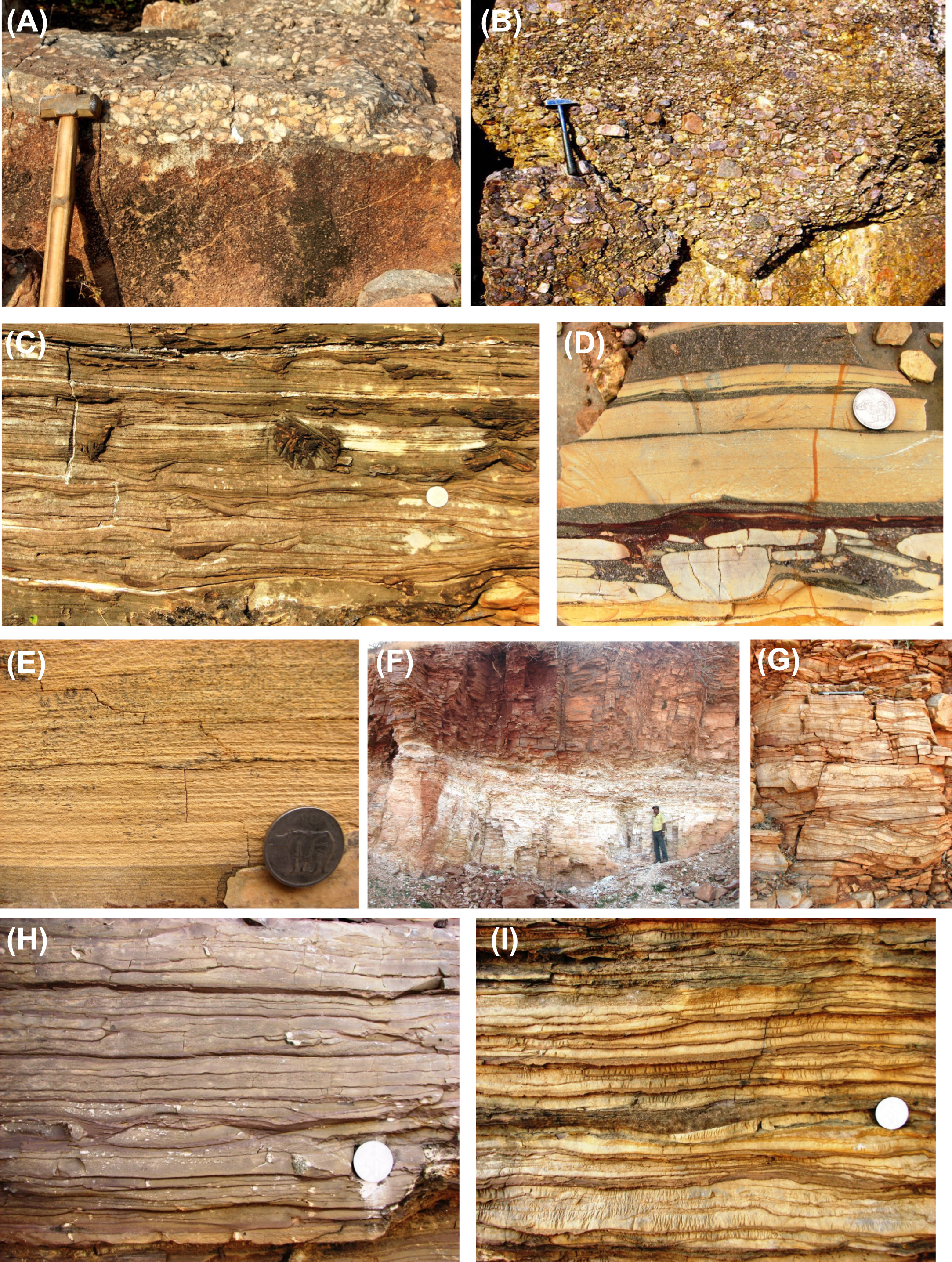Narji Limestone Fm
Type Locality and Naming
Lithology and Thickness
Limestone. Thin-bedded to flaggy limestone, about 500 m thick. Basal part has intercalated laterally persistent beds of gray and red lime mudstone alternating with thin glauconitic sandstone with occasional pockets of lime-clast conglomerate in the basal part. Cherty and argillaceous lenses and bands are common in the lower part, so are thin sandstone dykes. Plane parallel and wave ripple laminations are common in the gray limestone (lime mud) beds (Fig. images C and D below). The middle to upper part of the Narji Limestone consists of dark gray to black limestone with sparse calcareous shale, showing thin persistent laminations laterally traceable for tens of meters. Pyrite cubes are common in the black limestone and at places coherent to incoherent slumps on meter to decameter scale are reported.
[Field photographs showing lithology and sedimentary features in the Kurnool Group. Banganapalle Quartzite Fm – (A) basal conglomerate of overlying granitic basement, and (B) thick matrix supported polymict conglomerate with apparent size grading. Narji Limestone Fm - (C) lower part with thin wavy bedded impure limestone, and (D) glauconitic sandstone interbeds in limestone; note pockets of lime pebble conglomerate. Owk Shale Fm - (E) Thinly laminated ash beds, and (F) transition from Owk Shale (lower half of photo) to Paniam Quartzite Fm. Paniam Quartzite Fm - (G) truncated wavy lamination. Koilkuntla Limestone Fm - (H) thin bedded argillaceous limestone, and (I) impure limestone-shale intercalation within the Koilkuntla Limestone Fm to Nandyal Shale Fm transition. (from Saha et al., 2016)]
Relationships and Distribution
Lower contact
Conformably overlies the Banganapalli Quartzite Fm along a gradual contact. The plane laminated heterolithic siltstone-calcareous shale in the uppermost Banganapalle Quartzite gives way to laterally persistent beds of gray and red lime mudstone alternating with thin glauconitic sandstone with occasional pockets of lime-clast conglomerate in the basal part of the Narji Limestone.
Upper contact
Overlain by Owk Shale Fm with a sharp transition that is commonly marked by a clayey horizon.
Regional extent
GeoJSON
Fossils
Age
Depositional setting
Shallow to deep water below storm wave base. The shallow water wave features and intercalation with glauconitic sandstone are restricted to the lower part of the Narji Limestone. Horizontal continuity of thin limestone beds for long distances, sharp planar boundaries, and rarity of sand and silt-sized material are indicative deep basin deposition for bulk of the Narji Limestone. Presence of pyrite indicates euxinic condition and deposition in deeper isolated basin free from terrigenous influx.
Additional Information
The Narji Limestone is the main repository of cement-grade limestone in the Cuddapah basin.
